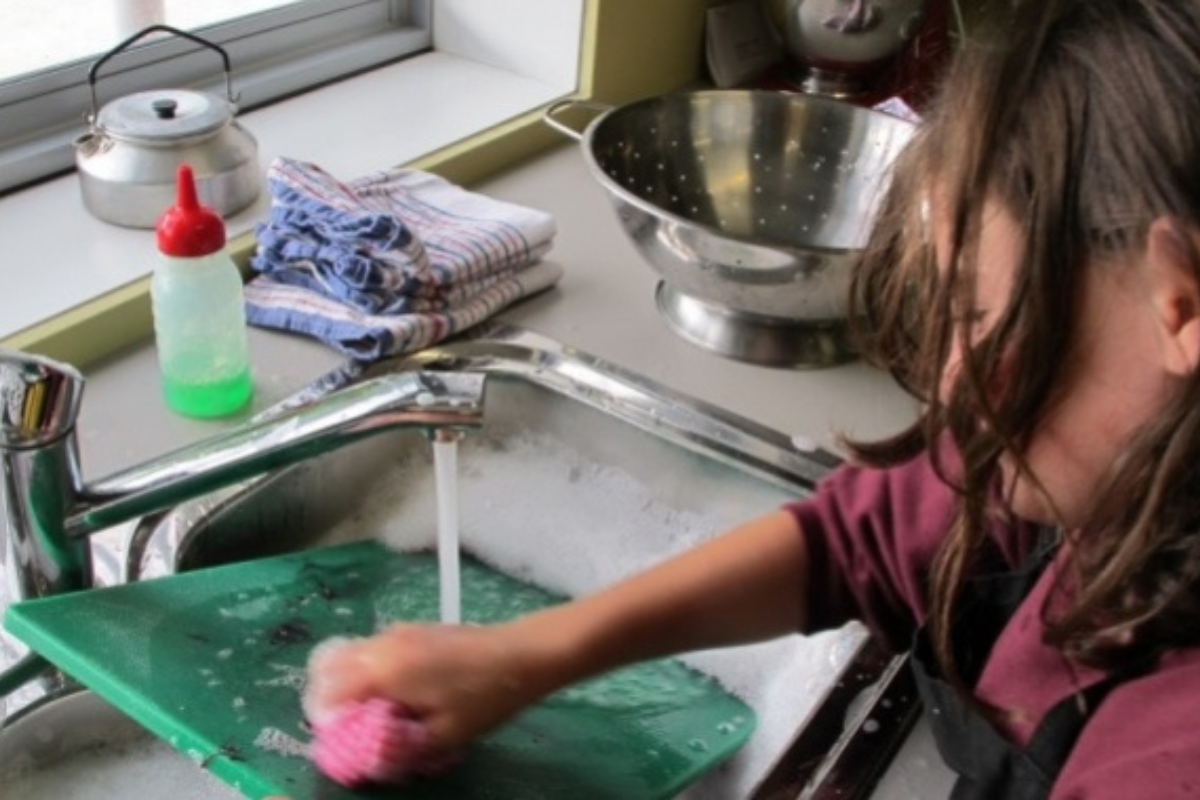Staying sharp with kitchen cleanup

While kitchen organisation, and cleaning up as a whole, can be an intimidating task, it helps to start small. One of the first important things to figure out is: where to put the knives?
Knives are one of the most important kitchen tools, but also one of the most dangerous. Because of this, schools have different knife safety procedures in place so that students can safely learn how to use knives in a safe and controlled environment.
At Karama Primary School, Garden and Kitchen Teacher Prajita Juneja keeps their knives in a “No-go zone, unless permitted”. Before cooking lessons, she will bring them out with the other equipment and ingredients. Grades 3 to 6 are all able to use the knives, but there is a strict ‘knives do not move stations’ rule, so children are not moving around the room holding knives.
.png)
Knife safety lesson at Zuccoli Primary School.
For Bronwyn Hayes at Laggan Public School, where all students are involved in cooking classes, only the Grades 3 to 6 children are allowed to use the knives to cut and chop. Otherwise, they are kept in knife blocks where teachers can access them. For the younger children, ingredients are pre-chopped to avoid them using the sharp implements, but they are allowed to use blunt knives, like butter knives, for cutting soft things and for spreading butter.
Brooke King, at Portland North Primary School, teaches children how to carry knives so they can, under supervision, collect their knives from a cupboard in the kitchen before carrying them back to their station.
Once knives – and other cookware – have finished being used, the all-important clean-up strategy gets put into place. For Brooke, this means that students place their knives, along with peelers, graters, and other sharp objects, into the designated ‘sharps bucket’. Everything in this bucket gets washed by adults. Similarly, at Birdwood Primary School, only the adults wash the knives. Prajita allows Grade 5 and 6 students to wash knives, so they can practice safe handling.
.png)
The clean up crew at East Freemantle Primary School, WA.
To follow that, all schools also have different strategies for clean-up. At Karama, Grades 3 to 6 students clean up before tasting. They are required to clean up the workbench, equipment, and utensils before they eat, and their utensils again after they eat. Prajita has found that this needs to happen under supervision or else some cheeky students slip through and attempt to get out of cleaning up! Early years students are only required to clean up their utensils, and as they are still learning, Prajita supervises and helps them out where needed. The whole kitchen also gets a big clean up twice a day, once by the assistant around recess time, and then by Prajita around lunch time.
“Clean up after eating can be chaos but some of our teachers organise the groups to each have a job, and this works the very best for clean up.”
— Sue Green, Birdwood Primary School
At Birdwood, students clean up part of the cooking process depending on what group they are in, with roles adjusted for students’ age and experience. For example, “Strawberry Group – load dishwasher, Eggplant Group – clean and wipe tables, Radish Group – wash serving bowls and pots and pans, Leek Group – Food scraps and feed chooks, Apple Group – Put aprons and tea towels in washing machine and sweep floors.”
Brooke makes sure that everyone helps clean up, including collecting scraps for the chooks, and then has three sinks for rinsing soiled dishes, washing dishes, and then rinsing again. Anyone not helping will be sure to get another job from Brooke!
There really isn’t a one-size-fits-all approach to knife use or kitchen clean up, so it’s great to see what works for different schools. If you have any tips share them via the Shared Table.
.png)
A utensil drawing activity from Mount Rogers Primary School.
For more organisational tips, read our shed/tool organisation story, for gloves, read Tips to have at hand. And members can find other great resources on the Shared Table, including these beaut cleaning checklists from Majura Primary School.
< Back to Latest News
